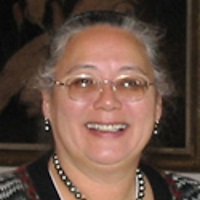Symbol Mastery for Multiple Language Learners

We are often asked for recommendations about how best to apply Davis Symbol Mastery when working with students and clients who speak more than one language or must learn another language. There is no one pat formula because of the individual variations in situation, needs, and background. Some people want to learn a second language for personal enrichment. Some need to pass exams to graduate or to better their employment prospects. Some children speak one language at home but are being educated in another language at school. Dyslexics want to master reading, writing and spelling no matter the language. Some people first experience severe dyslexia symptoms only when trying to learn a second language. Others find learning a second language enriches their skills in their native language. Davis Symbol Mastery can be a useful tool for both enrichment and remedial purposes.
Whatever is done should be based on the client’s goals, age, and educational needs. Bear in mind that the objective of Symbol Mastery is mastery of the three elements of any symbol. For the dyslexic learner, the objective is to make sure all three elements are mastered and no longer cause confusion or trigger disorientation.
| Type of Symbol | Letters | Punctuation | Words |
|---|---|---|---|
| What it means | pronunciation or speech sound | function | mental picture of concept or definition |
| What it looks like | shape, case, position on a line | shape and placement | letters in a specific order / spelling |
| What it sounds like | name of the letter | name of the mark | pronunciation of the word |
General Guidelines
When working with children ages 8-9 or less, it is best to start Symbol Mastery on the letters, alphabet and punctuation marks in the child’s mother language. At early ages, cognitive development and language development go hand in hand. Thus, for the young child first learning to read, the language that is most fluent will be the easiest for opening the door to emphasizing the basic structure of written language.

For an age 10 or older bilingual person, assess strengths in Speaking, Reading & Writing in each language. Start Symbol Mastery with the strongest language for reading and writing.
For someone just starting to learn a second language, begin with mastering the basics symbols and trigger words of the language that is already spoken, before starting this process with the second language.
Be sensitive to the fact that many of the words on our Trigger Word list are used to describe our temporal (having to do with time) and spatial relationship to the world, and that these relationships can vary from language to language.
Letters, Alphabets, Punctuation, and Words
- Do the alphabet and punctuation marks together, one language at time, in distinctly separate time frames for each language. For Roman alphabets that contain more letters than the English, when possible, do the longer alphabet first (reduction is better than increasing the number of letters to learn). The reason to do them completely separately is to avoid referencing, e.g., ‘It is the same in French as in English except for .…” as this can prevent true mastery. However, when such comparison/ referencing occurs naturally and is “discovered” by the client (as opposed to being taught or hinted at), it can aid mastery.

- To avoid confusion and referencing, it can be helpful to have the client say aloud to the clay letters, “This is the French alphabet!” or “You are the letter A in French!” in the respective language.
- When mastering words, it may also be helpful to have the client say aloud to the model, “You are (word) meaning (definition) in Spanish!” in the appropriate language and in a commanding tone of voice. This allows all the mental pictures to stay separate and distinct in their respective languages.
- Trigger words should be done separately in each language in their own time frames to ensure mastery. Especially the prepositions which can vary from language to language depending on context. (example: “for” in English meaning “with the intent to present to” as in “I got a gift for Ann,” would be “para” in Spanish. However, “for” with the meaning “to get” as in “I went for the groceries,” would be “por” in Spanish.) The model of the concept may remain the same but the sound and form of the word changes in Spanish but not in English.
- Models of the meaning of nouns and adjectives usually remain consistent. But with some languages the concept of feminine, masculine or neuter becomes involved in learning them. So it is best to master all words separately in their own time frame.
- Doing Symbol Mastery on the irregular and auxiliary (helping) verbs can also be a good opportunity to increase fluency and to master conjugation and tense in any language. However, these should be mastered slowly and thoroughly, in short sessions, to avoid confusion. The basic procedures for Davis Symbol Mastery are outlined in detail in The Gift of Dyslexia, and in the home kits available from DDAI.

Alice Davis
Alice Davis, Director of Davis Dyslexia Association International, has a degree in Counseling Psychology and Business Administration. She has worked with her husband, Ron Davis, since 1985 in their commitment to increasing international awareness of the positive aspects of Dyslexia […]



